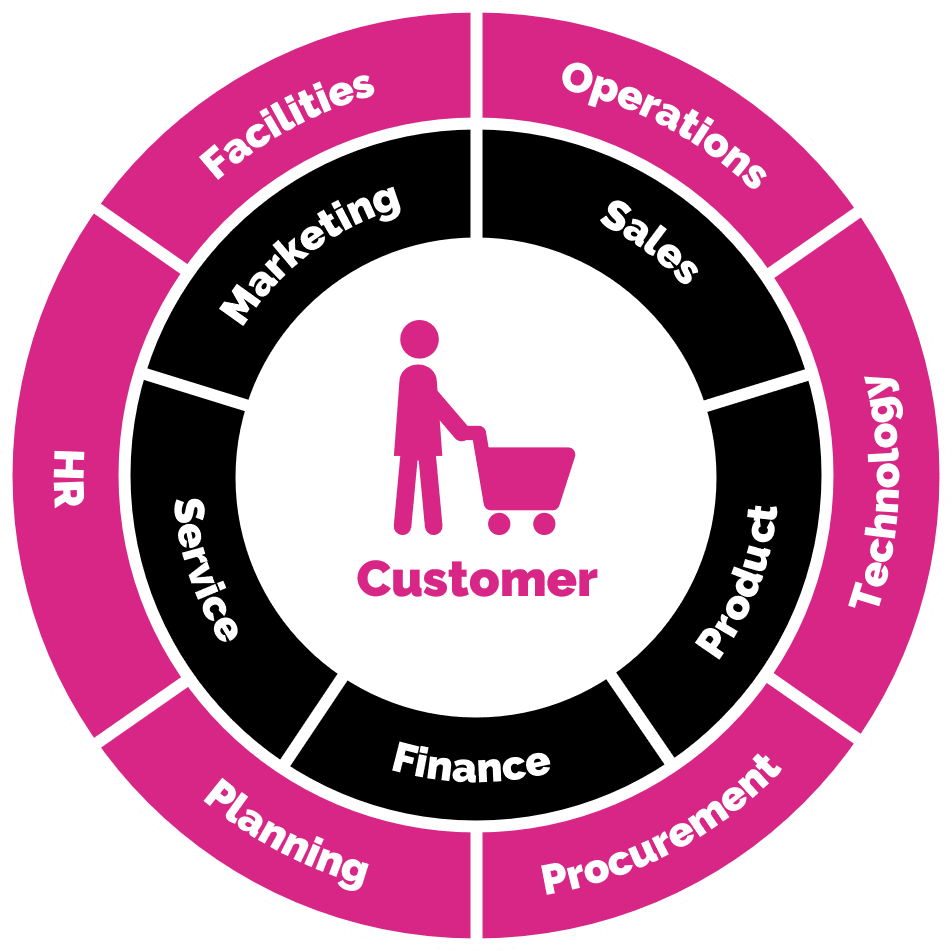For the board, transformation and technology leaders the need for a coherent digital strategy to drive large scale transformation is unlikely to be new.
So you think you have a successful digital transformation strategy ready or in progress? See if we agree.

So you think you have a successful digital transformation strategy ready or in progress? See if we agree.
For the board, transformation and technology leaders the need for a coherent digital strategy to drive large scale transformation is unlikely to be new.

Meet the author
For the board, transformation and technology leaders the need for a coherent digital strategy to drive large scale transformation is unlikely to be new. In many organisations neither is the need to be customer focused, nor the need to constantly transform to stay current.
Yet obtaining and retaining customers, thus creating resilience and growth in your business seemingly gets harder. What can be done to ease the cycle? Let’s start with the basics:
- Business goals, customer focus and digital strategy must be tightly coupled to stay competitive and current in today’s market across every sector, service and product.
- Well-formed digital strategy requires clear linkage with business goals. For example, for subscription businesses, this could be expansion strategies such as driving subscription revenue in new products or new markets alongside increasing retention and renewal in current products and markets.
Digital strategies should be the supporting pillars of how these business objectives can be delivered on, and in many cases accelerated.
In order to drive business objectives, let’s look back to our subscription example. To drive this strategy, attention is needed to drive usage, adoption and retention of your products and services. This comes down to some customer experience (CX) fundamentals… put simply are you meeting the needs of your customers? Do you understand these needs, both in the fundamentals as well as the opportunities to wow in order to deliver the best product and service you can?
Customers across almost all industries expect seamless multi-channel experiences. They are used to it in their day-to-day life. They want interactions to be intuitive, tailored and match similar interactions they have in other parts of their work and lives.
The need to have linkage between business, digital and customer strategy seems clear then yet many firms struggle to define, sustain and measure this interconnection effectively.
How do you ensure that you are joining up all the dots, digitally maturing, focusing on your customers needs, and staying aligned to corporate strategies?
Step one
Make the customer view a constant voice in strategy and planning. There should always be somebody who holds the customer voice, informed from the customers themselves from three angles: what they expect, what will take your offering to the next level in their eyes and what they need that they don’t even realise they need (think Henry Ford and Steve Jobs levels of customer insight, combined with product innovation).
Step two
These are not isolated strategies and although they are created from different inputs, agendas and areas of expertise, they should be formed and agreed as one. To me this is what the familiar diagram below really means.

Take input from expertise in all areas and all levels to form a coherent strategy, with the customer at the forefront, and business and technology goals clearly aligned.
Step three
Write it down. What is the business aiming to achieve? What experience will this drive? What transformation needs to occur? There are many models you can use here. Business canvas, V2MOM, VMOST, OKRs to name a few. The specific framework is not important as almost all offer a way to coherently describe and break down high level vision statements into measurable objectives. Pick something that won’t rock the boat and is simple and clear for anyone in the organisation to understand.
Defining time boxed success measures at this stage will make a real difference to your ability to execute so don’t forget this part and ensure measures break down from top line measure (e.g. subscription revenue increase down to the level of leading measures such as channel engagement)
Step four
Spread purpose. Allow this newly joined up strategy to transcend through your operational and transformational teams. With everyone working together to a clear goal which they have had the opportunity to input into, productivity and ambition will find a new freedom.
Step five
Start small, measure quickly and don’t be afraid to iterate on your strategy.
It sounds simple but this level of cohesion can be very challenging for many organisations.
The key lesson here is not to have a digital transformation agenda in isolation. Even if change is necessary to stay efficient and current, there is still a link to a business goal of not losing business or seeing a reduction in operating margin. Plus, without knowing what your customers need, then how can you know what current means?
Would you like a little help getting started and to see an example?
Contact us to receive an example and have a call with one of our experts.

